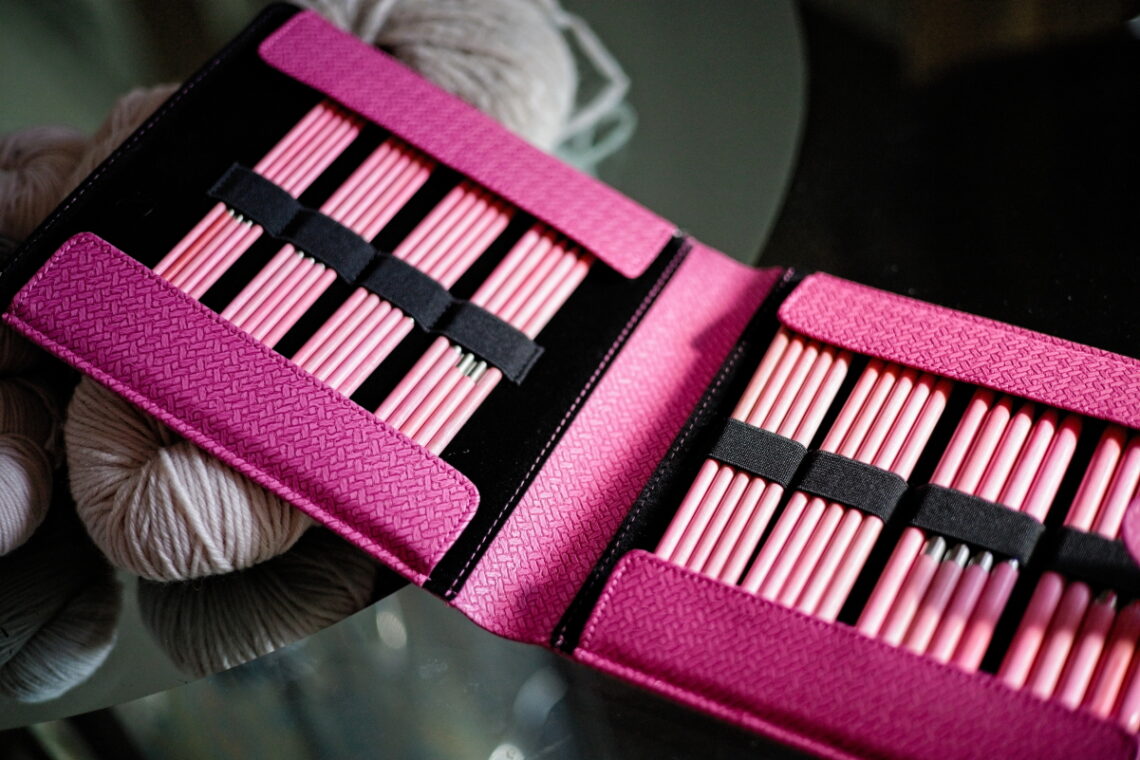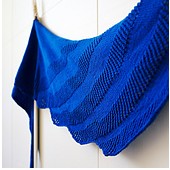-
Lykke double pointed needles (DPNs) review
This is LYKKE Blush 15cm (6″) Large Double Pointed Needle Set – Magenta Basketweave, the needles are sized from 4 mm / US 6 to 9 mm / US 13. They are perfect for knitting sleeves. 3rd February 2023 First time knitting with the LYKKE Blush 15cm (6″) Large Double Pointed Needle Set I love them! The length is just right. At the beginning I was worried that they were too short, but they turned out to be just the right length. Each needle measures 15 cm / 6 inches. I have another set of DPNs of another brand of length 20 cm / 8 inches, which always gets caught…
-
How to adapt a pattern to a different gauge
I’m sure that it happened to you before: that you want to use a pattern but it calls for a different gauge. I want to share with you how I approach this. Note: This method works for my patterns, which always include schematic measurements. And my schematic measurements are always calculated directly from the stitch counts. Some designers work differently and sometimes their schematic measurements are not related to their stitch counts. Backstory: My son has asked for a Rainbow Trail for him but he wants the style of Briki. My new gauge is 16.5 sts x 22 rows and the pattern gauge is 18 sts x 26 rows. If…
-
The essential tools for beginners
If you’re new to knitting, the only things that you truly need are one knitting needle (unless your project calls for several sizes), a tapestry needle and yarn. I do not advise on buying more than you absolutely need, especially when it comes to knitting needles. You’ll discover what you like when you knit more. When you find it hard to put your knitting down, you know that you’ve found your dream needles. Only then it’s wise to collect needles of every size of that brand. You should also try the magic loop method (search for “magic loop method” on YouTube). It’s a technique that allows you to knit any…
-
A fabric shaver that really works
Have you ever bought a tiny electric fabric shaver but found out that it didn’t work as promised? They usually don’t come with any user manual but they really should. When you use a fabric shaver next time, hold it vertically and it will work like wonder! Try it next time 😉
-
Alternative to Mattress Stitch
I like seamed designs. Seams add structure to a garment. As I knit mostly outside the home, I prefer working on a smaller pieces rather than dragging the whole garment everywhere. But I have a problem: I really dislike Mattress Stitch. I dislike its name, dislike the awkward position at which I have to work it. So what is the alternative? Basic running stitch or back stitch! You only have to remember to work it with wrong side facing (i.e. right sides together). Back stitch is more elastic but more bulky. If you use running stitch and are careful enough to match the edges stitch by stitch, the result is…
-
Favorite on-the-go knitting patterns
I don’t knit much at home. Most of my knitting is done at my in-laws place or at the seaside, where my toddler is kept busy. So it is almost a must to have a on-the-go knitting project on my needles. A good on-the-go knitting project should be lightweight to be carried around and it should not be a too quick knit that can be finished in a couple of hours. I don’t want to run out of knitting! That’s why you constantly see this type of designs pops up in my portfolio 😉 Below are some on-the-go projects that I enjoyed. If you cannot live without knitting, you may…
-
Choosing patterns for plus sizes
A sweater in size 2XL is not an enlarged version of the sample size. When grading is not done properly, you will get an unrealistically wide shoulder width, exceptionally long neck to waist measurement, etc. I had a hard time picking a good pattern when I was looking for a pattern for a plus size friend. Fortunately it is relatively easy to identify a poorly graded pattern from the schematic measurements. It won’t take you much time and will potentially help you save a huge amount of frustration. The key measurements to compare are shoulder width (or back width), back length (neck to natural waist) and armhole depth. You can…
-
Knitting lingo FAQ
What are those numbers within the parentheses () {}? The numbers in the parentheses refer to different sizes. The sizes available are usually 1 (2, 3, 4, 5) {6, 7, 8, 9, 10}. So for example, if you are a size 3, it means that whenever you see a sequence of numbers like that, the second number in the round parenthesis refers to your size. I would recommend circling the numbers related to your size before starting. They have nothing to do with metric nor imperial measurements. The metric and imperial measurements always have units like “cm”, “inches”, and are separated by a slash “/”. If you are new to…

